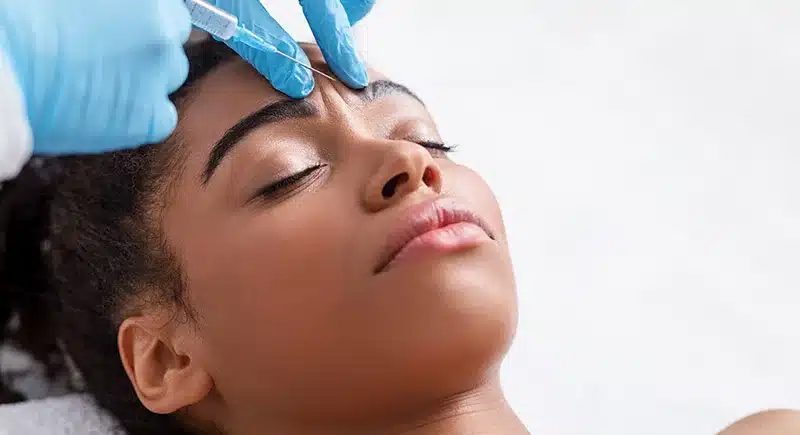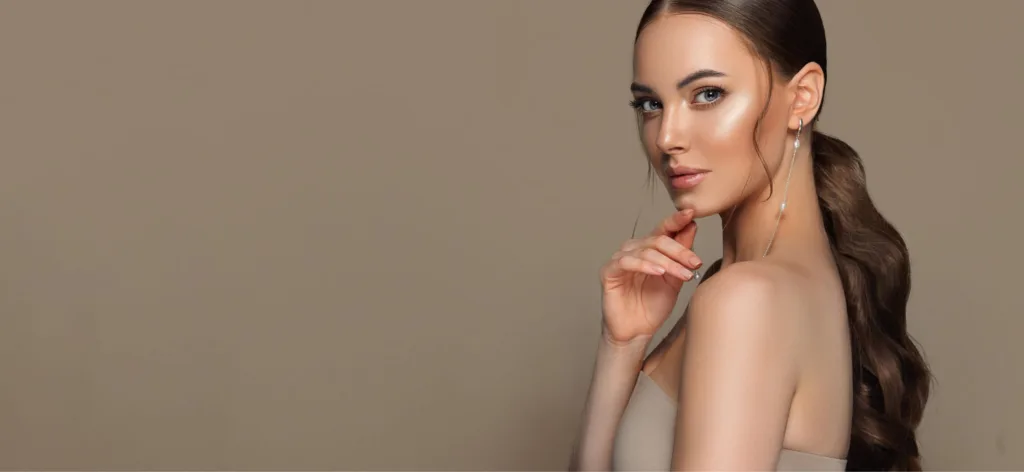New York Center for Facial Plastic Surgery
Schedule a consultation
Schedule today

Chronic migraines are a debilitating condition affecting millions worldwide. Characterized by intense, recurring headaches, they significantly impact daily life. This blog explores an innovative approach to managing these persistent headaches: Botox treatment.
While Botox is commonly associated with cosmetic procedures, its role in medical treatment, particularly for chronic migraines, has gained attention. We’ll dive into how Botox helps with migraines, addressing questions like “Does Botox help migraines?” and “How effective is Botox for migraines?”
Migraines are more than just severe headaches. They are a neurological condition presenting with various symptoms like throbbing pain, sensitivity to light and sound, nausea, and visual disturbances. Chronic migraines, diagnosed when a person experiences 15 or more headache days per month, can be especially challenging.
Triggers vary, including:
Managing these symptoms often requires the expertise of a headache specialist, a medical professional dedicated to treating headache disorders. These specialists are crucial in diagnosing and recommending treatment options, including Botox, to prevent migraine attacks and improve quality of life.
Botulinum toxin, commercially known as Botox, is a neurotoxic protein used for various medical conditions. Initially developed for cosmetic purposes, its therapeutic applications have expanded. Botox works by blocking nerve signals responsible for muscle contraction, which is why it’s effective for smoothing wrinkles.
However, its benefits extend beyond aesthetics. The FDA has approved Botox for several medical conditions, including chronic migraines, making it an important tool in the repertoire of treatment options for migraine sufferers.
The exact mechanism by which Botox helps in migraine treatment is still being studied, but it’s believed that Botox blocks neurotransmitters that carry pain signals from your brain. By preventing these signals from reaching nerve endings around your head and neck, Botox can effectively reduce the frequency and severity of migraine attacks.
It’s a preventive treatment, meaning it’s used to reduce the number of migraines one experiences rather than to alleviate symptoms once a migraine has started. Patients typically receive Botox injections every 12 weeks, and it may take several treatment cycles to see significant improvement.
The effectiveness of Botox in treating migraines has been substantiated through various studies and clinical trials. Patients with chronic migraines have reported fewer migraine days after receiving regular Botox treatments. Some studies suggest that Botox can reduce the number of migraine days by 50% or more for some patients.
It’s essential to note that the effectiveness can vary from person to person, and it’s not a cure for migraines. However, for those who have found little relief from traditional medications, Botox offers a promising alternative. Its role in treating migraines is increasingly recognized by healthcare professionals, making it a key component of comprehensive treatment plans for chronic migraine sufferers.

Botox treatment for migraines involves a series of injections administered by a healthcare professional, typically a headache specialist. The procedure is relatively quick, usually taking about 15 minutes.
During the session, small amounts of Botox are injected into specific areas around the head and neck. These areas are targeted to address the nerves and muscles involved in migraine pain. The number of injections depends on the individual’s specific symptoms and their severity.
Patients do not require any extensive preparation before receiving Botox injections. However, it’s crucial to discuss your medical history, including any medications you’re taking, with your healthcare provider. After the treatment, patients can usually return to their normal activities immediately.
It may take several weeks to notice an improvement in migraine symptoms, and the treatment is typically repeated every 12 weeks. Consistency is key in maintaining the effects of Botox for chronic migraine prevention.
Like any medical treatment, Botox comes with potential side effects, although they are generally mild and temporary. Common side effects include:
More serious side effects are rare but can include:
It’s essential to discuss these risks with your healthcare provider and monitor for any adverse reactions after the treatment.
Botox is not suitable for everyone. It’s typically recommended for patients who have not responded well to other preventive treatments. Pregnant or breastfeeding women, individuals with certain neurological diseases, or those allergic to the ingredients in Botox should avoid this treatment. A thorough evaluation by a healthcare professional is necessary to determine if Botox is an appropriate option for your migraine management.
There are numerous treatment options available for chronic migraines, ranging from medications to lifestyle changes and alternative therapies. Botox is often considered when other preventive treatments, such as oral medications, have been ineffective or have caused undesirable side effects. Unlike some treatments that provide immediate pain relief during a migraine attack, Botox works as a preventive measure to reduce the frequency and severity of future migraines.
When comparing Botox to other treatments, it’s essential to consider factors like the frequency of treatment, potential side effects, and individual response to therapy. While Botox offers a unique approach by targeting the nerves and muscles involved in migraine pain, other treatments may be more suitable for certain individuals. A comprehensive approach, often involving a combination of treatments, is typically the most effective strategy for managing chronic migraines.
In conclusion, for individuals grappling with the relentless pain of chronic migraines, Botox emerges as a beacon of hope. Addressing the critical question, “Does Botox help headaches?” our exploration reveals that it indeed offers significant relief for many. As an effective treatment for chronic migraine, Botox stands out for its ability to not only reduce the frequency of migraine attacks but also alleviate their intensity.
While considering Botox as a treatment for chronic migraine, it’s important to weigh the potential side effects of Botox against its benefits. Fortunately, most side effects are mild and temporary, making Botox a viable option for many who haven’t found relief through traditional methods.
Ultimately, Botox represents more than just a cosmetic solution; it’s a lifeline for those seeking to reclaim their lives from the grips of chronic migraines. Its role in the arsenal of migraine treatments is invaluable, offering a ray of hope for those yearning for relief.
As with any medical treatment, consultation with a healthcare professional is crucial to determine if Botox is the right choice for your individual needs. For many, it stands as an effective treatment, lighting the path toward a life with fewer headaches and more pain-free days.

Accessibility: If you are vision-impaired or have some other impairment covered by the Americans with Disabilities Act or a similar law, and you wish to discuss potential accommodations related to using this website, please contact our Accessibility Manager at (212) 570-2500 .